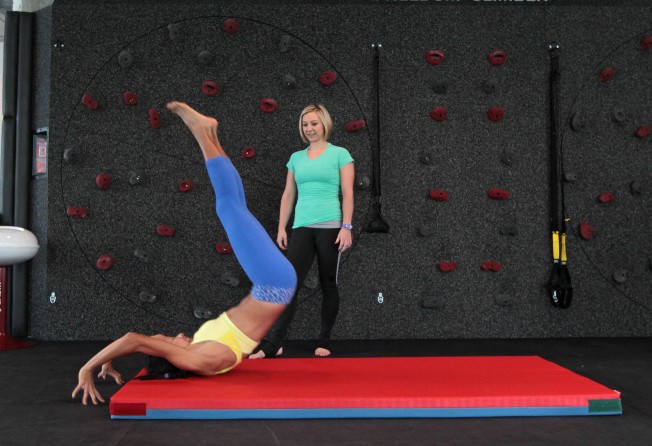
The handstand challenge: finale

It's hard work making things look easy. Gymnasts are experts at creating the illusion, pulling off feats of strength with immense grace and scarcely a hint of sweat or strain.
I certainly was fooled into thinking the handstand was simple enough to be mastered with four weeks of training. After all, it's considered a basic and foundational gymnastic move.

About a second separated me and my goal of holding a freestanding handstand for five seconds.

"Kids practise for months and months, and for minutes against the wall, before they perfect it. Some people may even take a year of daily practice before they can kick up to a perfect handstand each time."

The first few were tentative - kicking up too little and falling back down, or kicking up too hard and rolling over immediately.
Then I started pulling off two- to three-second handstands. Positive thinking helped. "You can do this," Ridge says, and I echo back: "I can do this."
But when you've only trained for four weeks - and didn't put in enough daily practice - trying to pull off the move is almost like winning the lottery: it's mostly about luck.
Top athletes practice to death their technique and movements until they can be performed almost unconsciously and arise almost spontaneously. Some people call this muscle memory.
My muscles couldn't recall much. The consequence was that I spent a few seconds before each kick up running through all the things I had to do.
Like golf, overthink and everything messes up.
Watch: Final week of the challenge to do a perfect handstand
On one try I got the strength of the kick right, but I failed to tighten my core, hips, buttock and leg muscles, and so fell over. On the next try the body tension was there, but I didn't extend my shoulders enough. And then just when I thought I got it all right, I forgot how hard to kick up again.
As the minutes wore on, the frustration and exhaustion grew, and the chances of me succeeding got slimmer and slimmer.
With five minutes of the session left, Ridge said: "OK, five last attempts. You can do this. How much do you want it?"
No luck. The closest I got was about four seconds.
Ridge encouraged me not to give up and keep training for my goal. She suggested to work on a few things: first, shoulder strength, which is the key for correcting slight imbalances while inverted. I lacked the strength and therefore could not "fight for the handstand enough".
Second, she suggested I strengthen my hip and buttock muscles by practising the dish exercise - something I struggled with since week one.
Third, consistency is important. "You need to practise daily," she says. Even for Ridge, after nine days off training during a recent holiday, she said she was "all over the place" when she resumed training.
"It takes time to build up aerial awareness," she says. "You may be able to hold the handstand shape on your feet, but upside down, everything is different."
While disappointed, there are positives to take away from this challenge. Through the four-week journey I've seen an improvement in my upper body and core strength, things that I typically neglect to train as a runner.
If you're looking for a fitness challenge, I'd highly recommend trying to pull off a handstand - aiming perhaps by 100 days, six months or even a year. Having such a goal helps take the focus off more common targets such as weight loss, toning up, building strength or gaining fitness - and yet these could all be by-products of handstand training.